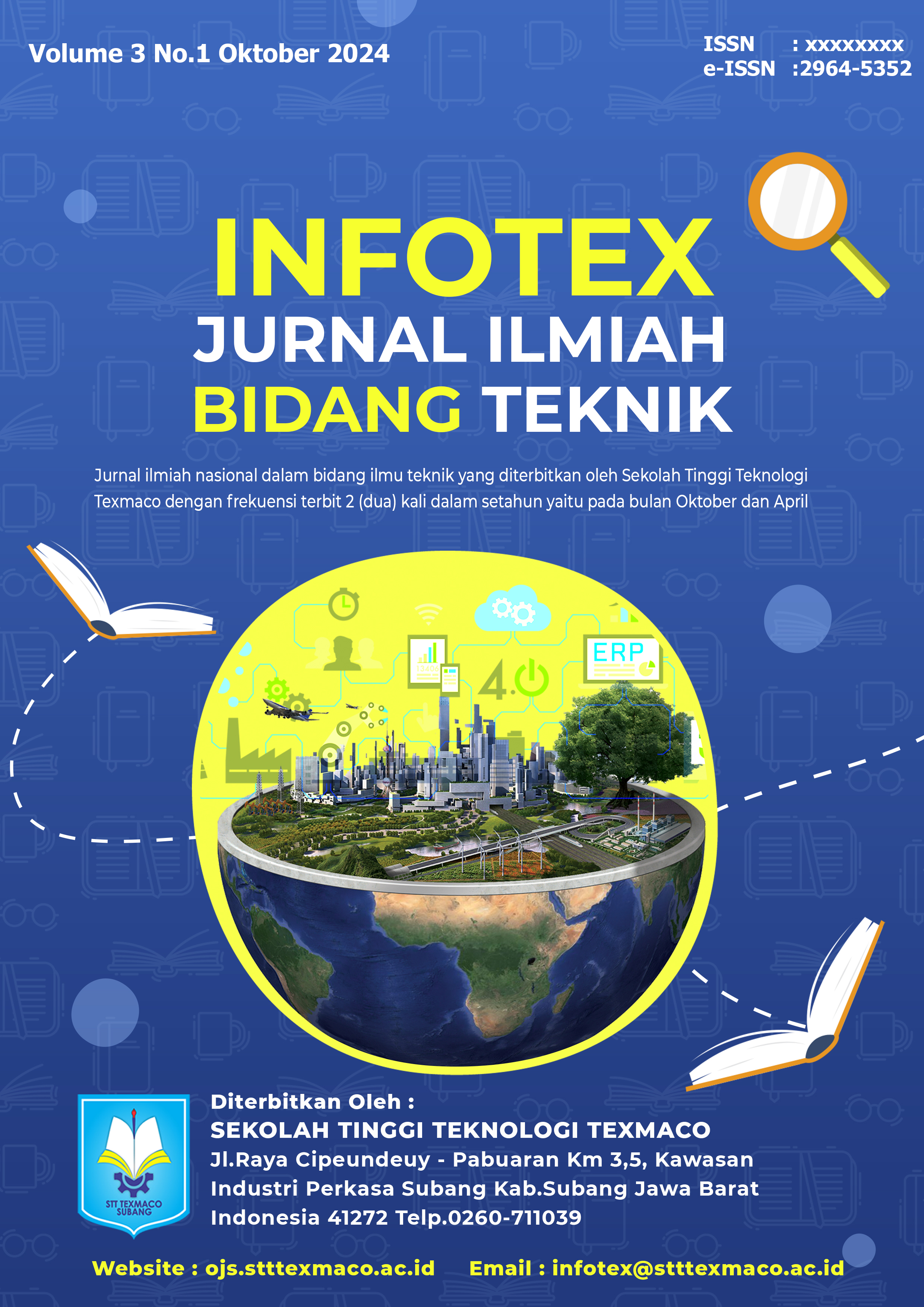Analisis Pengukuran Beban Kerja Mental pada Operator Produksi di Bagian Housing Assy 32100-K2V-N410 Menggunakan Metode Nasa-TLX di PT. Piranti
Keywords:
Workload, NASA-TLX, Fishbone, FMEA, proposalAbstract
PT Piranti is a company that focuses on automotive manufacturing, especially the manufacture of wiring harnesses for motor vehicles, with a daily production target of 500 units. This high demand for production, along with high time pressures, has caused operators to experience significant mental workloads. This study aims to find out the mental workload experienced by housing operators and provide suggestions for improvement to reduce the mental workload. To assess the level of mental workload using the National Aeronautics and Space Administration Task Load Index (NASA-TLX) method, it is assisted by tools such as fishbone and FMEA. The results of the study showed that 7 respondents were included in the high category, 8 respondents were included in the medium category and 1 respondent was included in the low category. From the research to reduce the level of mental workload by conducting retraining so that workers have enough understanding to carry out their work efficiently.
References
[1] A. Widyanti, A. Johnson, and D. de Waard, “Pengukuran beban kerja mental dalam searching task dengan metode rating scale mental effort (RSME),” J@ ti Undip, no. 1, pp. 1–6, 2010.
[2] R. I. P. Sari, “Pengukuran Beban Kerja Karyawan Menggunakan Metode NASA-TLX di PT. Tranka Kabel,” Sosio e-Kons, vol. 9Sari, R., no. 3, pp. 223–231, 2018.
[3] R. A. Simanjuntak, “Analisis Beban Kerja Mental Dengan Metoda Nasa-Task Load Index,” J. Teknol. Technoscientia, vol. 3, no. 1, pp. 78–86, 2010.
[4] B. Nurhidayat, B. Purwanggono, and A. Arvianto, “Analisis Beban Kerja Menggunakan Metode Nasa-Tlx Dan Berdasarkan Kepmenpan No. 75 Tahun 2004 Pada Karyawan Keuangan Fakultas Teknik Universitas Diponegoro Semarang,” Ind. Eng. Online J., vol. 5, no. 3, 2016.
[5] Lestari Widyastuti and Tangguh Dwi Pramono, “Analisis Beban Kerja Mental pada Pekerja Kantor Menggunakan Metode NASA-TLX,” Appl. Bus. Adm. J., vol. 2, no. 3, pp. 33–47, 2023, doi: 10.62201/abaj.v2i3.64.
[6] P. Fithri and W. F. Anisa, “Pengukuran Beban Kerja Psikologis dan Fisiologis Pekerja di Industri Tekstil,” J. Optimasi Sist. Ind., vol. 16, no. 2, p. 120, 2017, doi: 10.25077/josi.v16.n2.p120-130.2017.
[7] M. Arasyandi and A. Bakhtiar, “ANALISA BEBAN KERJA MENTAL DENGAN METODE NASA TLX PADA OPERATOR KARGO DI PT . DHARMA BANDAR MANDALA ( PT .”.
[8] S. C. N. Ramadhany and T. Rochman, “Analisis beban kerja mental dengan metode NASA-TLX pada karyawan divisi production and maintenance di PT XYZ,” 2022.
[9] G. A. Yudhistira, M. A. Febrianti, and M. A. Fathurrohman, “Analisis Beban Mental Pekerja untuk Perbaikan Sistem Kerja pada Konveksi XYZ dengan Metode NASA-TLX,” Performa Media Ilm. Tek. Ind., vol. 19, no. 2, pp. 103–112, 2020, doi: 10.20961/performa.19.2.46426.
[10] R. Fitriana and I. P. Sari, “Peningkatan Kualitas Proses Produksi Tahu Menggunakan Metode Fmea Dan Fta (Studi Kasus: Pabrik Tahu Dn),” J. Teknol. Ind. Pertan., vol. 33, no. 3, pp. 277–289, 2023, doi: 10.24961/j.tek.ind.pert.2023.33.3.277.
[11] S. Prastika, D. Gustopo, and P. Vitasari, “Analisis Beban Kerja Dengan Metode Nasa-Tlx di PT . Pos Indonesia Cabang Malang Raya,” vol. 6, no. 2, pp. 24–29, 2020.
[12] A. T. Septiansyah, R. Fitriani, and B. Nugraha, “Mental work load analysis melalui national aeronautics and space administration (NASA)-task load index (TLX),” vol, vol. 21, pp. 282–291, 2021.
[13] U. L. Putri and N. U. Handayani, “Analisis beban kerja mental dengan metode NASA TLX pada departemen logistik PT ABC,” Ind. Eng. Online J., vol. 6, no. 2, 2017.
[14] Z. H. Zen and A. Adrian, “Analisis beban kerja mental karyawan menggunakan metode NASA TLX (studi kasus: PT. Universal Tekno Reksajaya Pekanbaru, Riau),” J. Surya Tek., vol. 6, no. 1, pp. 21–25, 2019.
[15] D. Wahjudi and A. Cahyadi, “Implementasi FMEA untuk Peningkatan Produktifitas di PT. X,” J. Tek. Mesin, vol. 19, no. 2, pp. 45–50, 2022, doi: 10.9744/jtm.19.2.45-50.
Downloads
Published
How to Cite
Issue
Section
License
Copyright (c) 2024 R.M Sugengriadi, Muhammad Mirfak Arfan, Robiyatul Adawiah

This work is licensed under a Creative Commons Attribution-ShareAlike 4.0 International License.






